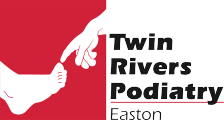Melissa Pandika of Ozy explains why she decided to swear off wearing stilettos after learning about how easy bunions can occur while wearing the shoe type.
Accordingly, wearing stilettos can cause a bunion, which in turn cause pain, tenderness, tingling, and occurs every one in four people ages 18 – 65. Of course bunions can also occur through genetics and are most commonly found in women, African-Americans, and adults over 50.
Skinny high heels cause toes to pinch together, which explains why 90% of the deformity occurs in women. Pandika states that although bunions can form through a variety of ways, wearing stilettos can almost guarantee the occurrence which is why she thinks it is “time to retire those five-inch Christian Louboutins.”
Living with a bunion can be extremely inconvenient and painful. If you have any concerns about your foot and ankle needs contact Dr. Robert J. Kaplan of Twin Rivers Podiatry Easton. Our doctor will treat your foot and ankle needs.
What is a Bunion?
A bunion is formed of swollen tissue or an enlargement of boney growth, usually located at the base joint of the toe that connects to the foot. The swelling occurs by the bones in the big toe shifting inward, which impacts the other toes of the foot. This causes the area around the base of the big toe to become inflamed and painful.
Why do Bunions Form?
- Genetics – susceptibility to bunions are often hereditary
- Stress on the feet – poorly fitted and uncomfortable footwear that places stress on feet, such as heels, can cause bunions to form
How are Bunions Diagnosed?
Doctors often perform two tests – blood tests and x-rays – when trying to diagnose bunions, especially in the early stages of development. Blood tests help determine if the foot pain is being caused by something else, such as arthritis, while x-rays provide a clear picture of your bone structure to your doctor.
How are Bunions Treated?
- Refrain from wearing heels or similar shoes that cause discomfort
- Select wider shoes that can provide more comfort and reduce pain
- Anti-inflammatory and pain management drugs
- Orthotics or foot inserts
- Surgery
If you have any questions please feel free to contact our office located in Easton, PA. We offer the newest diagnostic tools and technologies to treat your foot and ankle needs.

